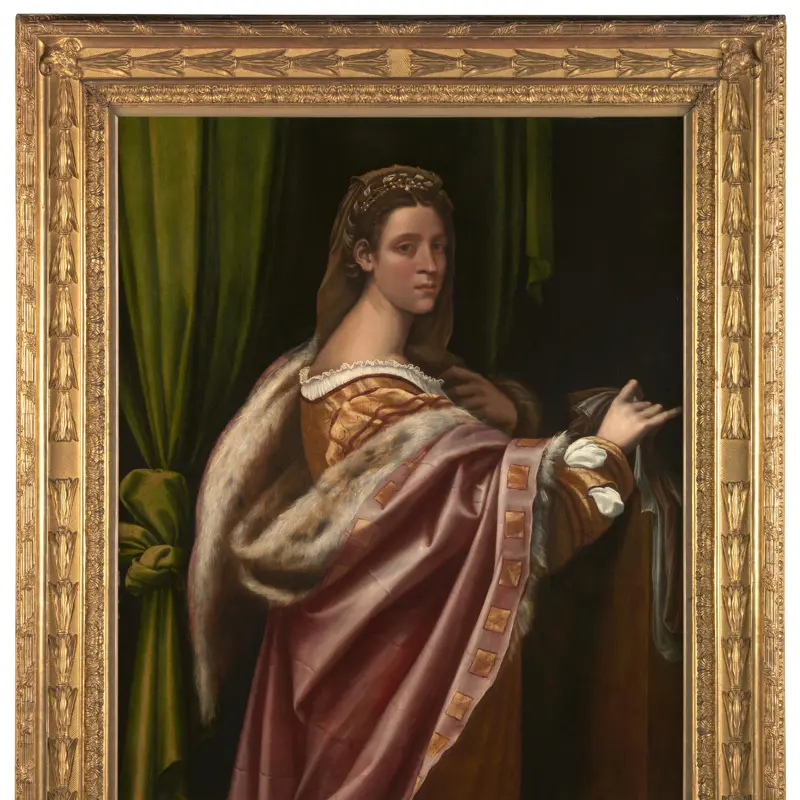Sebastiano del Piombo, 'Judith (or Salome?)', 1510
About the work
Overview
A young woman is moving towards an open window or door through which a hilly landscape can be seen. She turns to look back at us over her shoulder, her arm parallel with a stone parapet on which the date 1510 is written. On a metal salver she carries the greyish-green severed head of a man. The woman’s expression is hard to read – her lips are pressed closed but her eyes glint with moisture and emotion. Her identity is not entirely clear – she could be Salome with the head of John the Baptist or Judith with the head of Holofernes.
We do not know who commissioned this painting, which the young Sebastiano painted shortly before he moved permanently to Rome. The atmospheric rendering of the landscape view reveals the influence of his older colleagues Giovanni Bellini and especially Giorgione, with whom Sebastiano appears to have been close.
Key facts
Details
- Full title
- Judith (or Salome?)
- Artist
- Sebastiano del Piombo
- Artist dates
- about 1485 - 1547
- Date made
- 1510
- Medium and support
- oil on wood
- Dimensions
- 54.9 × 44.5 cm
- Inscription summary
- Dated
- Acquisition credit
- Salting Bequest, 1910
- Inventory number
- NG2493
- Location
- Room 8
- Collection
- Main Collection
- Previous owners
- Frame
- 16th-century Italian Frame
Provenance
Additional information
Text extracted from the ‘Provenance’ section of the catalogue entry in Cecil Gould, ‘National Gallery Catalogues: The Sixteenth Century Italian Schools’, London 1987; for further information, see the full catalogue entry.
Exhibition history
-
2012Titian's First Masterpiece: The Flight Into EgyptThe National Gallery (London)4 April 2012 - 19 August 2012
-
2017The Credit Suisse Exhibition: Michelangelo & SebastianoThe National Gallery (London)15 March 2017 - 25 June 2017
Bibliography
-
1959Gould, Cecil, National Gallery Catalogues: The Sixteenth Century Venetian School, London 1959
-
1987Gould, Cecil, National Gallery Catalogues: The Sixteenth Century Italian Schools, London 1987
-
2001
C. Baker and T. Henry, The National Gallery: Complete Illustrated Catalogue, London 2001
About this record
If you know more about this work or have spotted an error, please contact us. Please note that exhibition histories are listed from 2009 onwards. Bibliographies may not be complete; more comprehensive information is available in the National Gallery Library.




